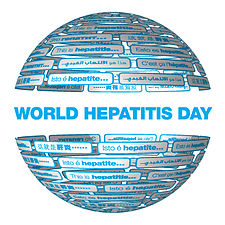To keep your baby safe in the sun
Babies can quickly suffer the short- and long-term damage of sunburn and heat
stroke, so keeping your baby safe in the sun is crucial.
Sunburn can cause pain, fever,
and dehydration. And just one
sunburn during childhood raises the risk of melanoma (the most deadly type of
skin cancer) as well as wrinkles later in life.
Keep your baby completely out of the sun as much as possible before 6
months of age. When you do go outdoors, be particularly careful in the early
months about taking all the following precautions.
How and when sunburns happen
The sun is strongest between 10 and 4 o'clock, so when you can, time
your stroll or outside play with your baby earlier than 10 or later than 4.
When you do venture out, keep in mind that the sun's rays bounce off surfaces
like water, snow, cement, and sand.
But your baby can also get burned at other times of day and on cloudy or
cool days. Why? Because it's not the heat of the sun that burns the skin but
the sun's ultraviolet (UV) rays.
UV rays can damage the skin at all times of day, all year round, even in
the middle of winter. And a baby's thinner, more delicate skin is especially
vulnerable.
You can't feel these when they hit your skin, but you'll see the effects
later. (It can take several hours for the redness and pain of a mild
first-degree burn to appear.)
Keep your baby in protected spots
Use the sunshade on your baby's stroller or carriage whenever you're
outside. Consider buying an inexpensive (less than $20) pop-up stroller shade
that has built-in UV protection and fits over your stroller's canopy to shelter
your baby's whole body.
Try to keep your baby in the shade – under a tree or umbrella, for
example. You may be surprised to learn that shade provides only partial protection
against UV rays. Without sunscreen or other protection, even a baby in the
shade can get sunburned.
If you're longing to spend your day at a beach or park, an outdoor sun
tent with built-in UV protection can keep your baby cool and protected.
Dress your baby in protective
clothing
Cover your baby's arms and legs in lightweight, light-colored clothing.
Light colors reflect the heat and keep skin cooler than dark colors, which
absorb heat.
Fabrics with a tight weave protect skin better than loosely woven
fabrics. (Hold the fabric up to the light. The less light you see shining
through, the tighter the weave.)
You can find clothing such as swimsuits and T-shirts made from fabric
with sun protection built into it. These products can be a little pricey, but they
might be a good investment if you often find yourself outdoors with your baby.
Whether your baby is bald or has a full head of hair, a hat is a must.
Choose a hat with flaps in the back for neck protection and a brim that's wide
enough to shade the face. A brim that protects the ears is better than one that
protects only in front.
If your baby will wear them, try a pair of UV-protective sunglasses.
Slather on the sunscreen
Choose a sunscreen with a sun protection factor (SPF) of at least 15.
Look for the words "broad spectrum" on the label. "Broad
spectrum" means the product protects against both UVA and UVB rays. UVB
rays are more likely to cause sunburn and wrinkling, while UVA rays cause
damage deeper in the skin.
Apply sunscreen 15 to 30 minutes before heading outdoors, and reapply it
every two hours. Make sure you cover all exposed areas of your baby's skin,
including the tips of the ears, the back of the neck, and the tops of the feet.
If your baby goes into the water, reapply sunscreen as soon as you towel
him off – even if it's been less than two hours since you applied it.
Other tips:
·
Replace your family's sunscreen periodically.
The active ingredients lose effectiveness after a while.
·
Learn what type of
sunscreen is best for children.
·
Test your sunscreen IQ.
·
Learn more about when to
start using sunscreen on your
baby.
·
Find out whether you need to worry about babies putting their hands in their mouth
after sunscreen is applied.
Protect your baby
from the heat as well as the sun
It's easy for your baby to get overheated in hot summer weather. For
more details, read our complete article about heat
stroke in babies.
To avoid heat
stroke:
·
Dress your baby in light, loose-fitting clothing.
·
Keep your baby in the shade whenever possible.
·
Make sure the car is cooled off before you go for a ride.
·
Offer your baby plenty of liquids (breast milk or formula provides
plenty of hydration; don't offer water before 6 months).
·
If you don't have air conditioning at home, visit a public,
air-conditioned place on very hot or humid days. The public library and the
mall are good options. Some communities offer shelters specifically for this
purpose.
Make sure your baby is protected
when in the care of others
Check with your baby's other caregivers to be certain that they
understand the importance of protecting your baby from the sun.
Daycare facilities often take specific precautions before heading
outdoors with children, although most will keep young babies indoors whenever
possible. Provide sunscreen and appropriate clothing for your baby's caregivers
to use.
Make it easy
Tote sunscreen in your diaper bag, along with a hat and little
sunglasses, if your baby's willing to wear them.
You might also tuck in (or stow in the car) an extra long-sleeved,
long-legged, lightweight outfit for more protection on the go. It may come in
handy when you decide to stop at the park on the way home and your baby isn't
covered up.

